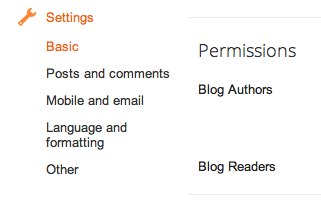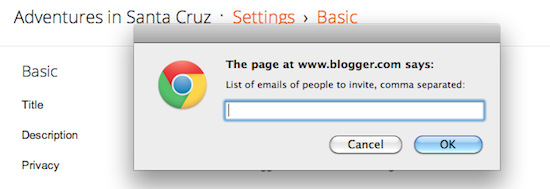When your site is ready:
- Submit it to Google at http://www.google.com/submityourcontent/.
- Submit a Sitemap using Google Webmaster Tools. Google uses your Sitemap to learn about the structure of your site and to increase our coverage of your webpages.
- Make sure all the sites that should know about your pages are aware your site is online.
Design and content guidelines
- Make a site with a clear hierarchy and text links. Every page should be reachable from at least one static text link.
- Offer a site map to your users with links that point to the important parts of your site. If the site map has an extremely large number of links, you may want to break the site map into multiple pages.
- Keep the links on a given page to a reasonable number.
- Create a useful, information-rich site, and write pages that clearly and accurately describe your content.
- Think about the words users would type to find your pages, and make sure that your site actually includes those words within it.
- Try to use text instead of images to display important names, content, or links. The Google crawler doesn't recognize text contained in images. If you must use images for textual content, consider using the "ALT" attribute to include a few words of descriptive text.
- Make sure that your <title> elements and ALT attributes are descriptive and accurate.
- Check for broken links and correct HTML.
- If you decide to use dynamic pages (i.e., the URL contains a "?" character), be aware that not every search engine spider crawls dynamic pages as well as static pages. It helps to keep the parameters short and the number of them few.
- Review our recommended best practices for images, video and rich snippets.
Technical guidelines
- Use a text browser such as Lynx to examine your site, because most search engine spiders see your site much as Lynx would. If fancy features such as JavaScript, cookies, session IDs, frames, DHTML, or Flash keep you from seeing all of your site in a text browser, then search engine spiders may have trouble crawling your site.
- Allow search bots to crawl your sites without session IDs or arguments that track their path through the site. These techniques are useful for tracking individual user behavior, but the access pattern of bots is entirely different. Using these techniques may result in incomplete indexing of your site, as bots may not be able to eliminate URLs that look different but actually point to the same page.
- Make sure your web server supports the If-Modified-Since HTTP header. This feature allows your web server to tell Google whether your content has changed since we last crawled your site. Supporting this feature saves you bandwidth and overhead.
- Make use of the robots.txt file on your web server. This file tells crawlers which directories can or cannot be crawled. Make sure it's current for your site so that you don't accidentally block the Googlebot crawler. Visit http://code.google.com/web/controlcrawlindex/docs/faq.html to learn how to instruct robots when they visit your site. You can test your robots.txt file to make sure you're using it correctly with the robots.txt analysis tool available in Google Webmaster Tools.
- Make reasonable efforts to ensure that advertisements do not affect search engine rankings. For example, Google's AdSense ads and DoubleClick links are blocked from being crawled by a robots.txt file.
- If your company buys a content management system, make sure that the system creates pages and links that search engines can crawl.
- Use robots.txt to prevent crawling of search results pages or other auto-generated pages that don't add much value for users coming from search engines.
- Test your site to make sure that it appears correctly in different browsers.
- Monitor your site's performance and optimize load times. Google's goal is to provide users with the most relevant results and a great user experience. Fast sites increase user satisfaction and improve the overall quality of the web (especially for those users with slow Internet connections), and we hope that as webmasters improve their sites, the overall speed of the web will improve.Google strongly recommends that all webmasters regularly monitor site performance using Page Speed, YSlow, WebPagetest, or other tools. For more information, tools, and resources, see Let's Make The Web Faster. In addition, the Site Performance tool in Webmaster Tools shows the speed of your website as experienced by users around the world.
Quality guidelines
These quality guidelines cover the most common forms of deceptive or manipulative behavior, but Google may respond negatively to other misleading practices not listed here. It's not safe to assume that just because a specific deceptive technique isn't included on this page, Google approves of it. Webmasters who spend their energies upholding the spirit of the basic principles will provide a much better user experience and subsequently enjoy better ranking than those who spend their time looking for loopholes they can exploit.
If you believe that another site is abusing Google's quality guidelines, please let us know by filing a spam report. Google prefers developing scalable and automated solutions to problems, so we attempt to minimize hand-to-hand spam fighting. While we may not take manual action in response to every report, spam reports are prioritized based on user impact, and in some cases may lead to complete removal of a spammy site from Google's search results. Not all manual actions result in removal, however. Even in cases where we take action on a reported site, the effects of these actions may not be obvious.
Quality guidelines - basic principles
- Make pages primarily for users, not for search engines.
- Don't deceive your users.
- Avoid tricks intended to improve search engine rankings. A good rule of thumb is whether you'd feel comfortable explaining what you've done to a website that competes with you, or to a Google employee. Another useful test is to ask, "Does this help my users? Would I do this if search engines didn't exist?"
- Think about what makes your website unique, valuable, or engaging. Make your website stand out from others in your field.
Quality guidelines - specific guidelines
Avoid the following techniques:
- Automatically generated content
- Participating in link schemes
- Cloaking
- Sneaky redirects
- Hidden text or links
- Doorway pages
- Scraped content
- Participating in affiliate programs without adding sufficient value
- Loading pages with irrelevant keywords
- Creating pages with malicious behavior, such as phishing or installing viruses, trojans, or other badware
- Abusing rich snippets markup
- Sending automated queries to Google
Engage in good practices like the following:
- Monitoring your site for hacking and removing hacked content as soon as it appears
- Preventing and removing user-generated spam on your site
If you determine that your site doesn't meet these guidelines, you can modify your site so that it does and then submit your site for reconsideration.


















